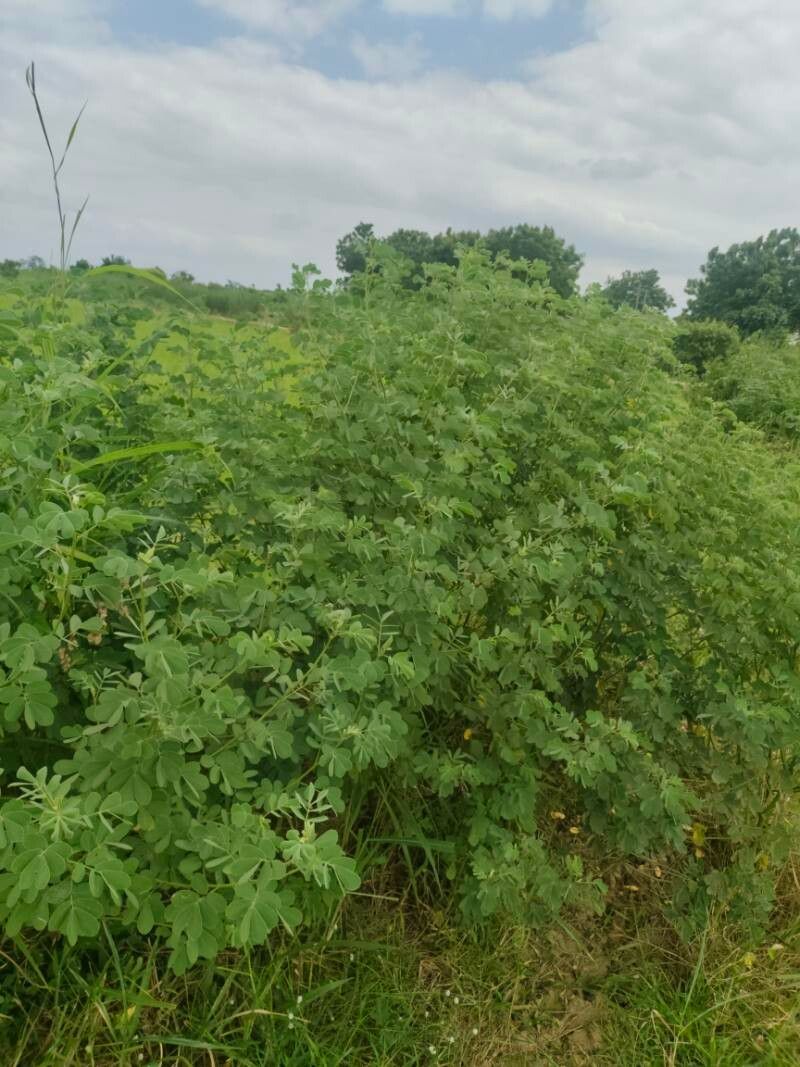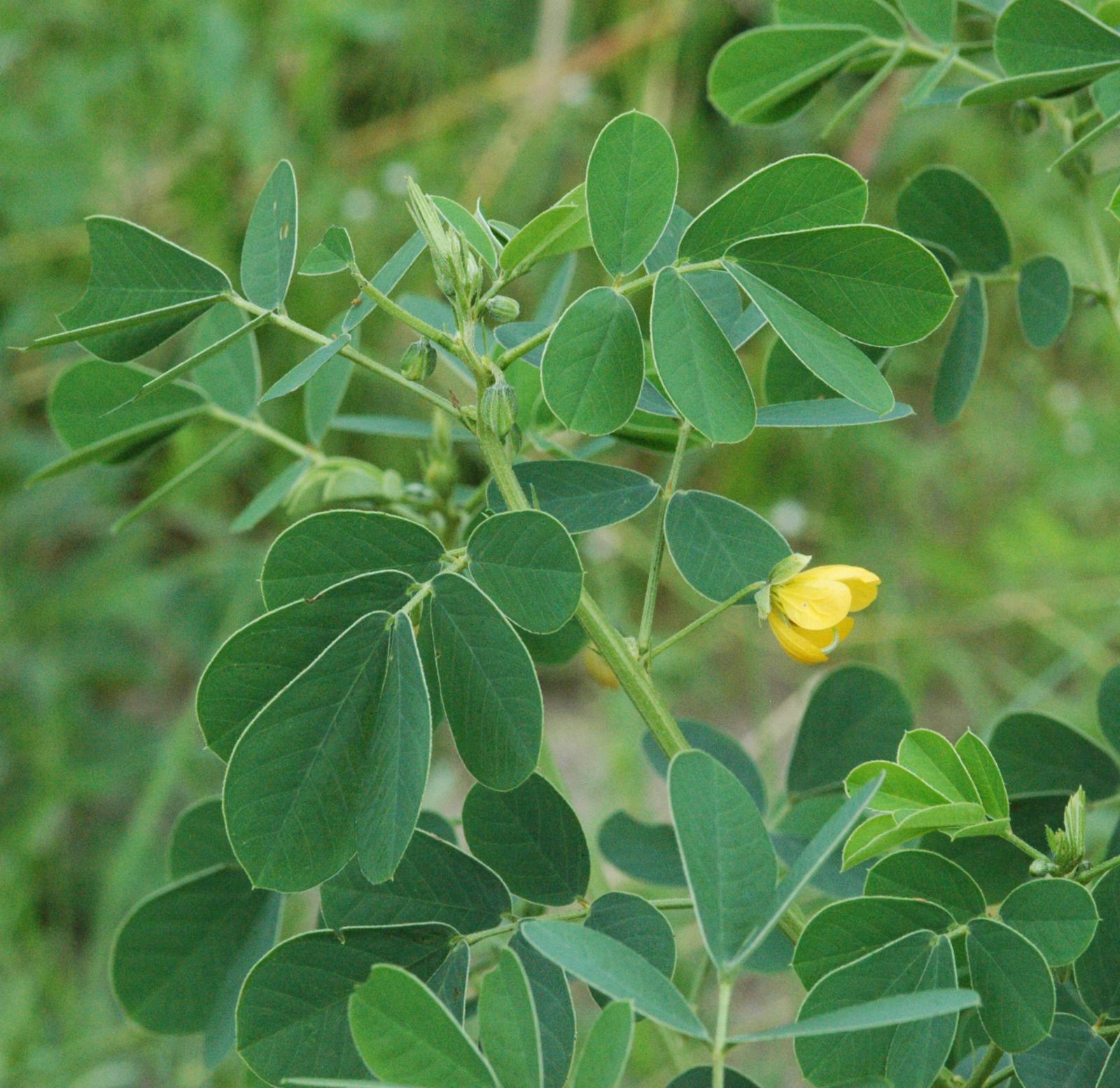Sicklepod
senna obtusifolia
Also known as: ["Coffee senna","Sicklepod senna"]
Overview
A herbaceous annual plant with yellow flowers and sickle-shaped pods, often considered a weed in agricultural areas.
Benefits & Perks
["wildlife attractant (bees, butterflies, birds)","drought tolerant","fast growing"]
Botanical Classification
| Phylum: | Magnoliophyta |
| Class: | Magnoliopsida |
| Order: | Fabales |
| Family: | Fabaceae |
| Genus: | Senna |
| Botanical Name: | Senna obtusifolia |
Plant Characteristics
Basic Information
- Category: Herbs & Weeds
- Suitable Location: outdoor garden bed in full sun, or container in a sunny spot
- Suitable For:
- Is Weed: No
- Allergenicity: low
Environmental Needs
- Climate: {"temperatureRange":"15–35°C"}
- Hardiness: {"zones":"8–11"}
- Misting: rarely required, only if ambient humidity is very low
- Drainage: Fast-draining to prevent waterlogging.
- Soil Type: Well-draining, sandy loam with organic matter; tolerates poor soils but thrives with added compost.
Maintenance Level
- Maintenance Level: very low
- Toughness Level: high
- Pruning Frequency: Annually in late winter or early spring; light pruning can be done as needed.
- Pruning Intensity: Moderate; remove up to one-third of the plant if overgrown, but avoid heavy pruning during flowering
Care Details
Ideal Sunlight Coverage:
Full sun (6–8 hours of direct sunlight daily); tolerates partial shade but may become leggy.
Sunlight Tolerance Tips:
Acclimate plants gradually to intense sunlight; protect from harsh afternoon sun in hot climates; ensure adequate ventilation if grown indoors.
Care Requirements
Care Difficulty
easymoderate
Sunlight
full sun
Rotate plant for even light exposure; use sheer curtains to filter intense sun; avoid sudden light changes.
Watering
every 7–10 days during active growth, reduce in winter
Water thoroughly but infrequently; ensure good drainage; avoid waterlogging.
Soil
well-drained, sandy or loamy soil
pH: Slightly acidic to neutral (pH 6.0–7.0).
Use raised beds in heavy soils; avoid over-amending with organic matter in wet climates; test soil pH annually.
Temperature
Warm temperatures (65–85°F / 18–29°C); sensitive to frost; thrives in tropical to subtropical climates.
Protect from frost; ensure good air circulation in heat; avoid sudden temperature fluctuations.
Fertilizing
every 4–6 weeks during growing season
Apply fertilizer after watering to prevent root burn; use organic options like compost for slow-release nutrients; flush soil occasionally to prevent salt buildup.
Propagation
Methods
Seed or stem cuttings; seeds germinate readily, while cuttings root with moderate success.
Step-by-Step Propagation Guide
- Prepare medium.
- Plant seeds or cuttings.
- Maintain moisture.
- Provide warmth and light.
- Transplant once rooted.
Best Time: Spring or early summer when temperatures are warm and growth is active.
Environment
Warm (70–80°F / 21–27°C), humid, and bright indirect light; protect from direct sun.
Medium
Well-draining mix of perlite and peat moss or cactus potting mix.
Hormone
Rooting hormone can be used for stem cuttings to improve success rates.
Timeline
Seeds germinate in 1–3 weeks; stem cuttings root in 3–6 weeks and establish in 2–3 months.
Tools Needed
Pruning shears, rooting hormone, pots, well-draining medium, misting bottle.
Quick Tips
Use fresh seeds for best germination; keep cuttings moist but not waterlogged; provide bottom heat for faster rooting.
Pruning & Repotting
Pruning Guide
Method
Use clean cuts just above a leaf node or bud; thin out crowded branches to improve air circulation.
Pruning Plan
Prune to maintain shape, encourage bushier growth, and remove dead or diseased parts.
Tools
Pruning shears, sterilizing solution, gloves.
Checklist
Sterilize tools; prune dead/diseased parts; shape the plant; clean up debris.
Repotting Guide
Best Season
Spring, before the active growing season begins.
Pot Size
Increase pot size by 2–3 inches in diameter; ensure good drainage holes.
Method
Remove plant gently; trim roots if necessary; place in a slightly larger pot with fresh, well-draining soil; water lightly.
Suggestions
Repot every 2–3 years or when roots fill the pot; beneficial for container-grown plants to refresh soil and provide space.
Checklist
Choose appropriate pot; prepare new soil; handle roots carefully; water after repotting.
Advanced Care Tips
Watering Mastery
Watering Checklist
Check soil moisture; water deeply; ensure drainage; avoid wetting leaves.
How to Apply Water Properly
Water at the base of the plant, ensuring moisture reaches the root zone; allow excess water to drain away; water in the morning to reduce evaporation.
Watering Schedule Tips
Water deeply once the top inch of soil is dry; reduce frequency in winter to prevent root rot.
Soil Improvement
Add perlite or sand for drainage; incorporate compost for fertility; ensure good aeration.
Temperature Stress Management
Signs of Temperature Issues
Chlorosis, leaf drop, stunted growth, or wilting in extreme heat or cold.
Cold Stress
Growth slows or halts; leaves may turn yellow or brown; risk of frost damage or death in freezing temperatures.
Solution: Move to a warmer location; provide frost protection; avoid overwatering in cold conditions.
Hot Stress
Wilting, leaf scorch, or reduced flowering due to excessive heat and drought stress.
Solution: Provide shade during peak heat; increase watering frequency; use mulch to retain soil moisture.
Fertilizing Guide
Fertilizing Checklist
Check fertilizer type; dilute properly; apply during active growth; avoid winter feeding.
Fertilizing Method
Use a balanced, water-soluble fertilizer diluted to half strength every 4–6 weeks during the growing season; avoid fertilizing in winter.
Common Problems & Solutions
Toxicity Warning
Cats
ToxicCats are particularly sensitive to the toxic compounds in Senna obtusifolia. Ingestion can result in severe gastrointestinal upset and potential systemic effects due to their smaller size and faster absorption rates.
⚠️ Symptoms:
🌿 Toxic Parts:
⚡ Toxic If:
if eaten
Dogs
ToxicIn dogs, ingestion of Senna obtusifolia can cause severe gastrointestinal distress due to its laxative compounds. Chronic exposure may lead to dehydration and electrolyte disturbances.
⚠️ Symptoms:
🌿 Toxic Parts:
⚡ Toxic If:
if eaten
Humans
ToxicSenna obtusifolia contains anthraquinone glycosides, which can cause gastrointestinal irritation and laxative effects. Prolonged or excessive ingestion may lead to electrolyte imbalances and potential kidney or liver damage.
⚠️ Symptoms:
🌿 Toxic Parts:
⚡ Toxic If:
if eaten
Frequently Asked Questions
Q: Is Senna obtusifolia toxic to pets?
A: It is mildly toxic to dogs and cats if ingested in large quantities.
Q: How does Senna obtusifolia grow?
A: It is a fast-growing annual plant that thrives in warm climates and can tolerate drought conditions.
Q: Is Senna obtusifolia used for any medicinal purposes?
A: Traditional uses include its use as a laxative, though modern medical use is limited.
Quick Reference
| Family: | Fabaceae |
| Care: | easy |
| Light: | full sun |
| Water: | every 7–10 days during activ |
Get Expert Care Tips
Download the Plantious app for personalized care reminders and plant identification!
Google Play App Store








